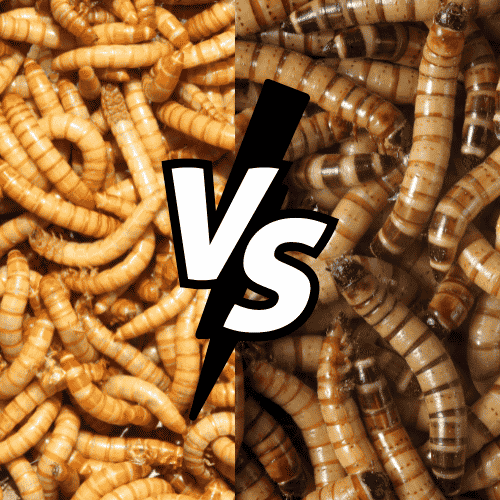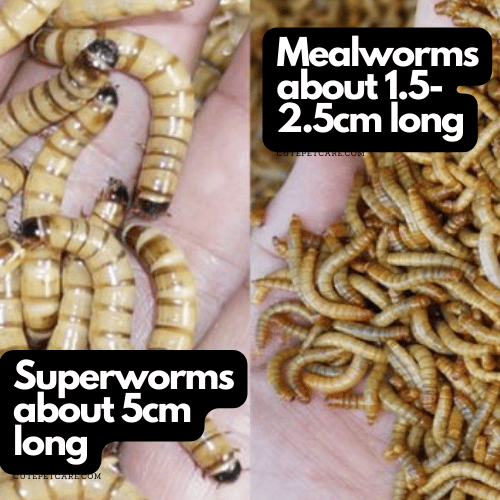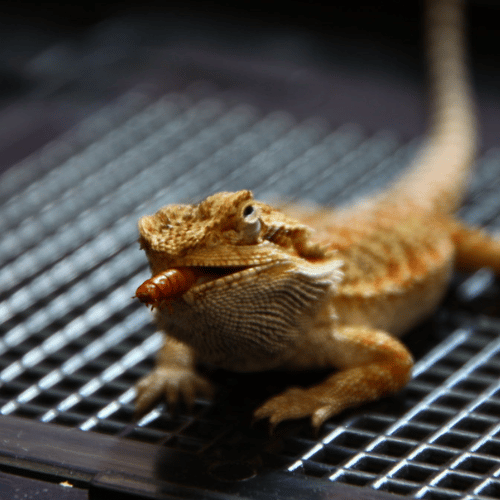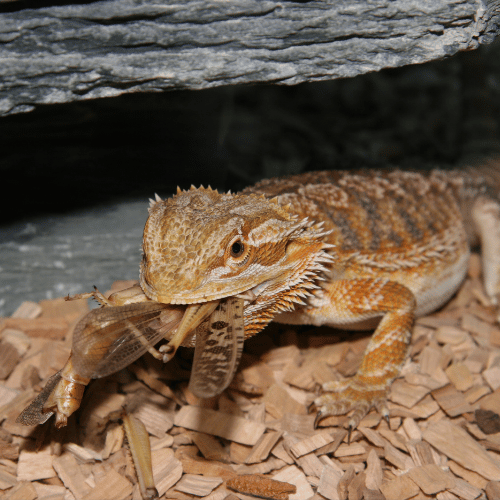There are many bugs and worms that are available in the market today— mealworms and superworms being the most common. So let’s go through the big differences in this Mealworms vs Superworms battle.
Mealworms are the larvae of Tenebrio Molitor, a kind of darkling beetle. They are commonly used as feed for pet fish, birds (especially in the nesting stage) as well as reptiles.

On the other hand, superworms are the larvae of Zophobas Morio and are sometimes referred to as kingworm. It is also a species of darkling beetle. Superworms are a preferred food option for popular pet reptiles such as bearded dragons.
Are Mealworms & Superworms the Same?
No, Mealworms and Superworms are not the same. However, they are similar as they are both larvae of different species of darkling beetles, and they are both used to feed pet reptiles. Moreover, they are holometabolous and go through the stages of egg, larva, pupa and adult.
Additionally, they are both used in the waste disposal industry for their ability to consume polystyrene foam.
Difference Between Superworms & Mealworms
There are many differences that set the two kinds of darkling beetle larvae apart,
- Size
Mealworm larvae grow to about 1 inch in length but are smaller than superworms usually grow to about 2 inches long. In fact, super worms can grow up to five times the size of the average mealworm.
Their larger size can also be attributed to the higher chitin presence which in turn causes a lower meat-to-size ratio. However, there are giant mealworms available in the market that have been injected with hormones. These hormones delay pupation and allow them to grow larger than average.

- Form
Superworms look like large mealworms except for the fact that the ends of their bodies are very dark, almost black in colour.
After pupation, they emerge as light-coloured beetles and transform into black beetles over time.
- Digestibility
The digestibility of a substance is determined by its fibre content, as insectivores cannot process fibre as well as we do. For humans high fibre is often indicative of being more friendly to metabolism, this, however, is not the case for reptiles, and other insectivores.
Fibre is stored in the form of chitin among insects, and this causes their exoskeletons to be harder. That is why mealworms are attributed to be more digestion-friendly than superworms, and perform well when fed to aged pets, especially reptiles.
- Egg To Beetle Timeline
Superworms remain in the egg stage for anywhere between 3 to 20 days, after which they can remain in the larval stage for around 12.5 months. Subsequently, the pupation may take a week or two, and the adult beetle can go on to live up to 15 years.
Meanwhile, the mealworms can be in the egg stage for around 9 to 13 days and the larval stage for 10 to 15 days. Their pupation takes longer, around 3 weeks; however, they tend to have a much shorter lifespan as an adult — around 90 days at most.
- Eggs
Superworms produce anywhere between 90 to 500 eggs in their lifetime. Whereas mealworms produce only about 75 to 100 eggs, which means, superworms produce 500% more eggs than mealworms on average.
- Gut-Loading Needs
Superworm larvae are very easy to gut-load and eat whatever they can find. They thrive on foods such as chick starter mash, corn flakes, fruit, vegetables, marrow, and rolled oats.
Mealworms, on the other hand, are not easy to gut load. They reject a lot of food and this can negatively impact their growth and nutritional profile. Although, if you do successfully find a feed they like, they will grow exponentially.
- Refrigeration
Superworms cannot tolerate the cold temperatures of the refrigerator like mealworms do. This makes it difficult to store superworms for later use.
- Sting
Superworms have a small pin on their backs that they use for attacking and can sting a predator when it feels threatened. However, mealworms possess no such pins and therefore, do not sting.
It is advisable to pinch the heads of superworms with a tweezer before giving them to your pet, especially if the pets are still young.
Are Superworms Good for Bearded Dragons?
Superworms are a great choice for bearded dragons. They are high in mineral content and are a crunchy treat to the dragons who like to chomp on their food. However, too much of anything is never a good idea, and superworms can be highly addictive to bearded dragons.

It is essential to maintain sufficient variation in the dragon’s diet to ensure it gets all of its nutrients and does not get addicted to any one food group. That being said, if your pet bearded dragon begins to reject food that is not superworms, you might have to consult a vet.
How Many Mealworms To Feed A Hamster? A Complete Guide
Mealworm vs Superworm Nutrition – All You Need to Know
As discussed above, mealworms and superworms have different nutritional values, and hence offer varied benefits for pets. It wouldn’t be feasible to decide on the best among the two, as they both have their hits and misses, however, you should get the best guidance from an experienced exotic pets vet in this regard.
Mealworms
Protein – 20%
Fat – 13%
Fibre – 2.5%
Calcium – 3.2%
High in protein, but low in fibre, fat, and calcium, which as mentioned above results in better digestibility, but comes with a harder exoskeleton affecting the overall experience and mouthfeel for pets.
Superworms
Protein – 17.4%
Fat – 18%
Fibre – 3%
Calcium – 10.8%
While they rank a little on the lower end when it comes to protein, they are up for the same when it comes to fibre, fat, and calcium content. Given their crunchiness, and mouth-feel factors, they can be quite addictive, especially for reptiles such as bearded dragons.
Final Words
Mealworms are meatier than superworms, and contain more protein. However, superworms have better calcium and other mineral levels. But either of these alone will not provide your reptile with the requisite nutrients. Therefore, it is vital to provide a balanced and varied diet for their health and growth.

Doctor of Veterinary Medicine (D.V.M.) at Nation Taiwan University,Master of Science (M.S.) in Biomedical Engineering at National Taiwan University of Science and Technology




